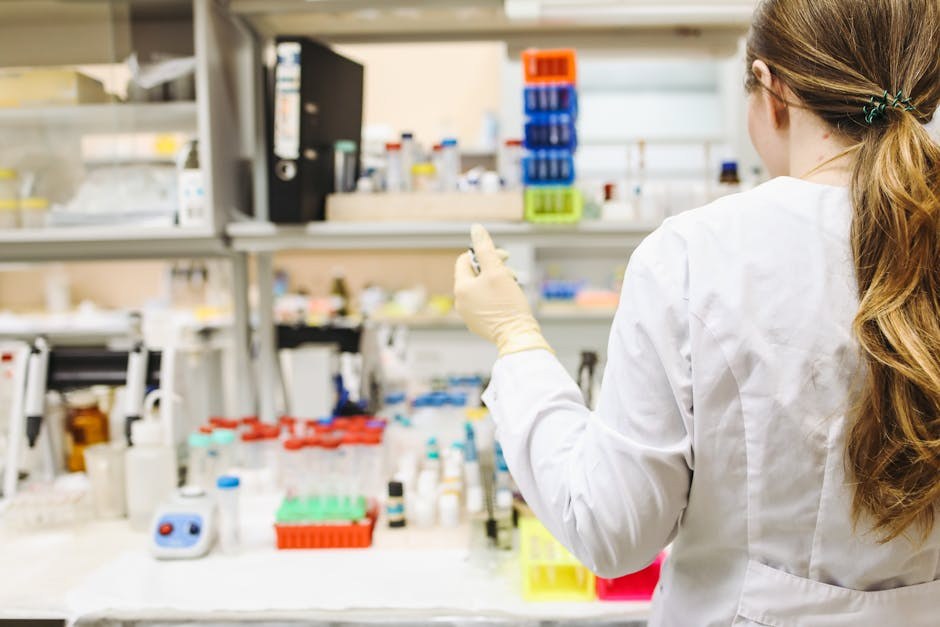Kissing is often treated like an afterthought, yet it can change the entire trajectory of a budding romance – one exquisite kiss can melt doubts, while a clumsy smooch can cool the mood in seconds. If you’ve ever wondered how to come across as a good kisser instead of leaving someone unsure, you’re in the right place. This guide reimagines the essentials, turning scattered advice into a clear, playful roadmap you can actually use the next time lips are on the horizon.
Why kissing carries more weight than people admit
A kiss is intimate in a way that surprises many people. There’s breath, warmth, scent, rhythm, and the tiny micro-movements that say more than words could. That’s why learning to be a good kisser isn’t superficial – it’s about attention, empathy, and timing. The way you kiss hints at how you listen, how you respond, and how you handle closeness. When you approach that first lean-in as a good kisser, you’re signaling care and confidence, not just desire.
Attraction starts in the head and lands on the lips. Chemistry lives in details – a gentle pace, soft pressure, and the ability to read the moment. If you can deliver those pieces consistently, you’ll be remembered as a good kisser long after the goodnights are said.

How to sense the right moment
Before a kiss, move slightly closer and notice what happens: do they mirror you, hold eye contact, or tilt toward you? Those small signals matter. Brush a curl from their forehead, let your fingers graze their arm, or rest a hand at the small of the back – each of these tiny tests can tell you if a kiss is welcome. A good kisser never treats consent as a guessing game; you tune in and proceed when the signs say yes.
If the energy dips or they lean away, hit pause. Being a good kisser means valuing comfort more than momentum. You can reset the vibe with a smile, a light joke, or simply more conversation – pressure off, warmth on.
Different kisses for different moods
There isn’t one perfect kiss – there are many, and they each serve a moment. A goodnight kiss is a sweet promise, private kisses unfold slowly behind closed doors, spontaneous kisses surprise during everyday moments, and the urgent “I-can’t-wait” kiss crackles with impatience. A good kisser chooses the right style for the energy in front of them, not the one they rehearsed earlier in the mirror.

The practical playbook: technique without the fuss
The basics don’t require you to memorize choreography. They ask for awareness, patience, and a willingness to adapt. Use the checklist below as a flexible guide – not a script. When you embody these habits, people feel it, and you become a good kisser by instinct rather than effort.
- Start with softness. Meet their lips gently, as if you’re saying hello. Soft contact sets a tender tone and tells your partner you’re a good kisser who doesn’t bulldoze the moment.
- Breathe and slow down. Rushing creates tension in the jaw and shoulders. A good kisser slows time – inhale through the nose, exhale quietly, and let the pace unfold.
- Keep lips supple. Hydrated, smooth lips matter. Licking only makes them wet, not soft. Think comfort, not gloss – a good kisser feels effortless, not slippery.
- Mind the mint. Fresh breath speaks volumes. A discreet mint before goodbye can make all the difference and is a subtle trademark of a good kisser.
- Eyes closed at contact. Softly closing your eyes invites you into sensation. Peeking can make things awkward; a good kisser focuses on feeling, not surveillance.
- Hands matter. Place a hand at the jawline, cradle the neck, or rest at the waist. Gentle touch anchors the moment – it’s how a good kisser turns two lips into full-body intimacy.
- Read the response. Are they leaning in, relaxing, pausing, or smiling? A good kisser listens with lips and adjusts pressure or tempo accordingly.
- Take the hint on tongue. For a first kiss, keep it minimal. If they softly part their lips or linger, you can answer in kind. A good kisser treats tongue like spice – never the whole dish.
- Pressure in waves. Gentle to firmer to gentle again – like a tide. A good kisser varies pressure to keep sensation alive.
- Match rhythms. Mirror, then lead a little, then mirror again. The harmony says everything. This musicality is the secret language of a good kisser.
- Short and sweet, then linger. End earlier than you want and hover close – forehead to forehead, a soft smile – and you’ll be remembered as a good kisser who knows restraint.
- Stay present. Don’t plan five steps ahead. Presence turns average technique into gold; that’s the hallmark of a good kisser.
- No hasty assumptions. A kiss doesn’t promise anything beyond itself. A good kisser lets the kiss be the moment, not the map.
- Avoid the “washing machine.” Circular, frantic motions feel juvenile. A good kisser uses natural, responsive movements instead.
- Guard against excess saliva. Take micro-pauses to swallow. Clean, balanced contact is part of being a good kisser.
- Don’t overstage the setting. Privacy and comfort beat rose petals and speeches. A good kisser lets the environment support, not steal the show.
- Let lips shape to theirs. Slightly parted, soft, and adaptable. A good kisser molds rather than mashes.
- Be gentle with bites. A feather-light nip can thrill, but only briefly and only if welcomed. A good kisser keeps playfulness controlled.
- Avoid lip-lock monotony. Vary tempo, angle, and length. Surprise – in small, thoughtful doses – is how a good kisser keeps sparks flying.
- Know when to pause. Micro-pauses create anticipation – the sigh, the smile, the second lean-in. That’s where a good kisser lives.
- Keep conversations for after. Murmur a warm compliment if you like, but long discussions break immersion. A good kisser saves words until lips part.
- Respect boundaries. If someone isn’t leaning in, step back. Consent is non-negotiable – nothing makes a good kisser faster than mutual enthusiasm.
- Work with mood shifts. A heated kiss can soften; a shy kiss can bloom. A good kisser steers with sensitivity, not stubbornness.
- Keep lipstick and balms light. Too much product can distract. A good kisser lets texture feel like skin, not candy wrapper.
- Mind the tilt. Meet angles naturally. If you bump noses, laugh softly and try again – grace under pressure marks a good kisser.
- Stay attuned to breath. Breathe through your nose and relax the jaw. Smooth breathing keeps you steady like a good kisser who never panics.
- Use the whole canvas. A graze along the cheek, a temple kiss, a whisper at the corner of the mouth – a good kisser paints with variety.
- Skip the hickey. It’s rarely romantic and often messy. A good kisser leaves memories, not marks.
- Let them return. End a touch early and wait. If they come back, you’ve tuned the energy well – exactly what a good kisser aims for.
- Balance passion and care. Show enthusiasm without steamrolling. That blend turns you into a good kisser in anyone’s book.
- Hold after the kiss. Rest your forehead to theirs for a beat. This small afterglow is a signature move of a good kisser.
- Be honest if it’s off. If the rhythm isn’t working, slow down, smile, and reset. A good kisser is brave enough to try again lightly.
- Practice with presence. The more you kiss attentively, the easier it becomes. Repetition with care forms the instincts of a good kisser.
- Keep the tongue playful, not pushy. Think soft exploration, then retreat. This keeps you coded as a good kisser, not an over-eager one.
- Tune your touch. Hands at the hips, fingers through hair, a thumb at the cheekbone – tactile harmony is part of being a good kisser.
- End on intention. Finish with slightly firmer pressure, release the lower lip, and ease back with a smile. That exit is how a good kisser seals memory.
How to tell when things are working
Curious whether your approach is landing? You’ll know you’re a good kisser when the rhythm feels shared rather than one-sided, when your partner leans in instead of pulling away, and when the moment ends with a soft laugh or a quiet sigh rather than a scramble for distance. You’ll also notice variety – you don’t kiss everyone identically; you adapt, and that adaptability is the fingerprint of a good kisser.
Another clue: you stop thinking about technique mid-kiss. Your body knows what to do, and the lips do the listening. In that flow state, you’re not trying to be a good kisser – you simply are.

Common pitfalls and easy fixes
Even seasoned charmers have off nights. The difference is how quickly you notice and adjust. Here are frequent stumbles and gentle corrections any good kisser can apply on the fly.
- Dry lips. Address it before the date with water and a light balm. Comfort is non-negotiable for a good kisser.
- Too wet or too loud. Ease pressure, swallow, and soften movement. Subtlety keeps you in the good kisser lane.
- Teeth bumps. It happens – smile, adjust angle, slow down. Recovery with grace is classic good kisser behavior.
- Frozen arms. Place your hands with intention; stillness can read as discomfort. Grounded touch marks a good kisser.
- Overthinking. If a thought spiral starts, pause for a small smile and a breath. A reset keeps you a good kisser instead of a tense one.
- Rushing the tongue. Wait for invitation. Patience communicates care – the signature of a good kisser.
- Overstaying the kiss. Leave a little space for longing. Knowing when to stop is what a good kisser does beautifully.
Momentum builders: anticipation without pressure
Anticipation is foreplay’s quiet cousin. The tiny pause before lips meet – the half-second hover – can make hearts beat louder than a dramatic dip. A good kisser uses the moment before contact like a spotlight, not a stall. Try this flow: approach slowly, exhale, let your gaze drop to the mouth and back to the eyes, tilt, and meet softly. If the kiss lands, let it breathe, then return. Each loop deepens the connection and confirms that you’re a good kisser guiding with intention.
Touch zones that amplify a kiss
Kissing isn’t just mouth-to-mouth – it’s body-to-body. A hand over a heartbeat, fingers at the nape, a palm at the hip, or a light caress along the forearm can turn a sweet kiss into something that lingers. A good kisser keeps touch respectful and responsive; you’re not grabbing for effect, you’re holding for connection. Think of touch as punctuation that helps the sentence make sense.
When nerves show up uninvited
Butterflies are normal – they mean you care. Channel them. Roll your shoulders back, take a quiet breath through your nose, and let the first kiss be simple. Simplicity keeps you from forcing a “moment,” which is what a good kisser avoids. If a giggle sneaks out, let it be warm rather than self-conscious. Humor – used gently – can reset tension without breaking intimacy.
Becoming the kind of kisser people remember
You don’t need theatrical moves to be praised as a good kisser; you need curiosity, patience, and a sense of play. Treat each kiss as a fresh conversation: you speak, they answer, you listen, and together you find a shared rhythm. When you feel chemistry rise, guide it; when it dips, soften or stop. That humility is what separates a merely decent kiss from one that hums in the body hours later.
Practice with intention. If you’re already in a relationship, kiss more often – unhurried good-morning kisses, light kitchen pecks, slow doorframe kisses that say “I see you.” Frequency grows skill, and attention grows confidence. Over time, you stop chasing perfection and start enjoying the ride – and enjoyment is the quiet anthem of a good kisser.
Most of all, remember the afterglow. The second or two after lips part is its own space – look at them, grin, touch your forehead to theirs, or trace your thumb against their cheek. That tiny coda tells the story of the entire moment. It says you’re present, attentive, and yes, a good kisser who knows that the softest gestures often echo the longest.
Follow your instincts, tune your awareness, and keep your touch kind. Do that consistently and you won’t have to convince anyone – they’ll know you’re a good kisser the moment your lips meet.